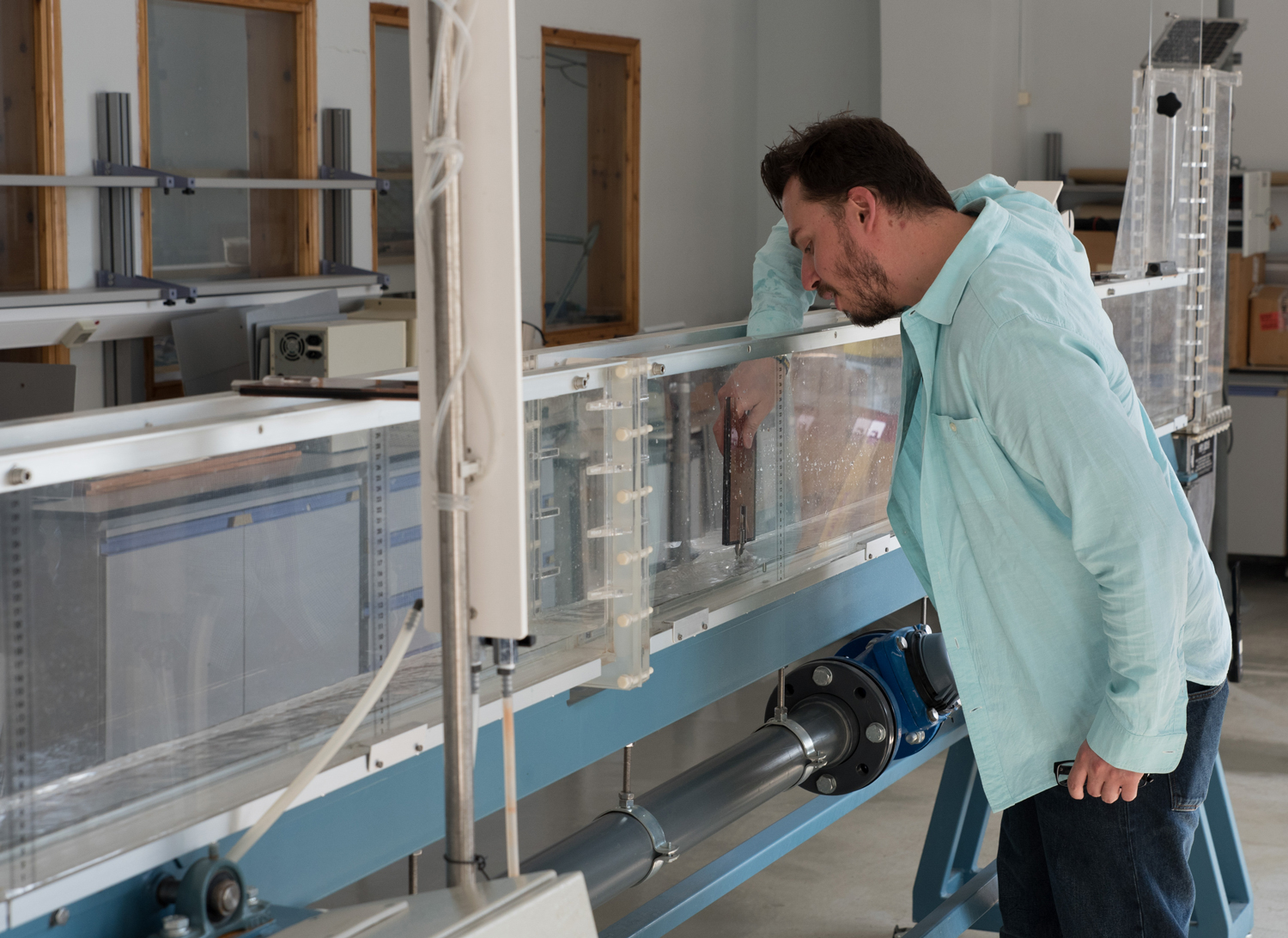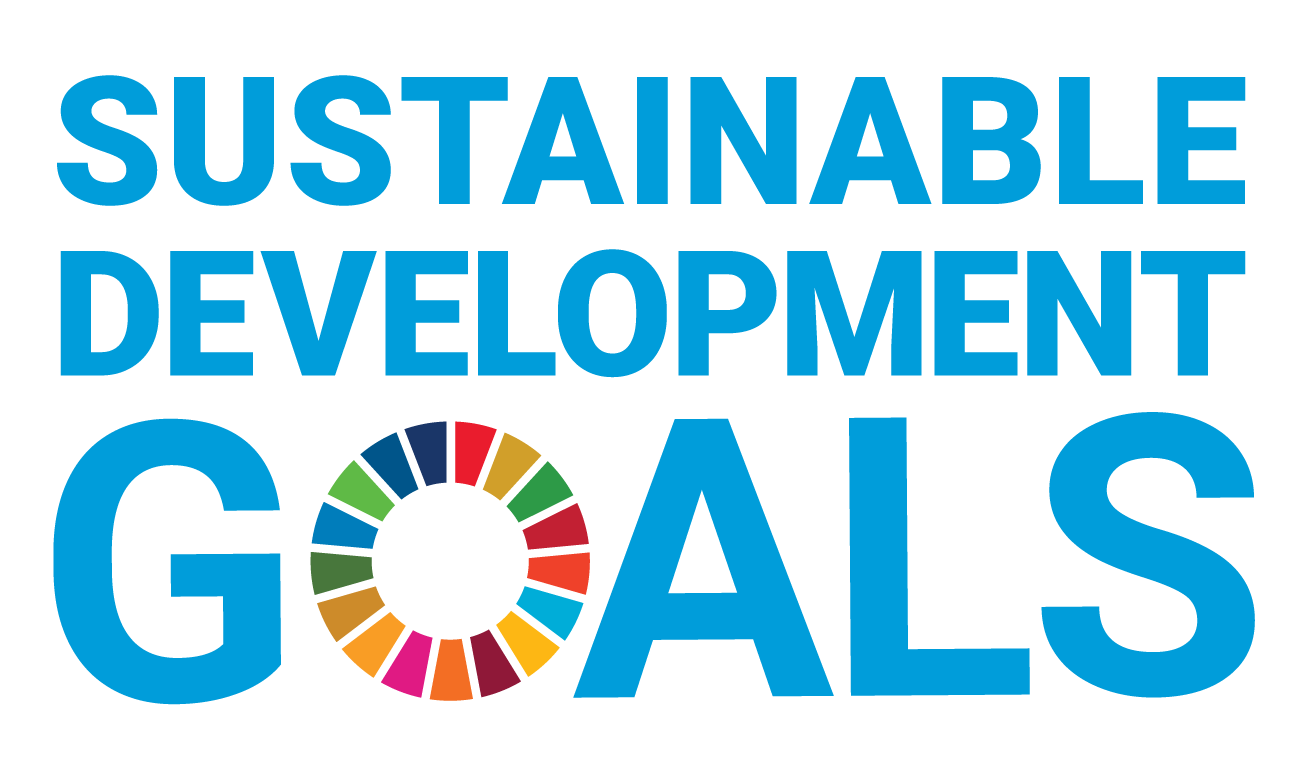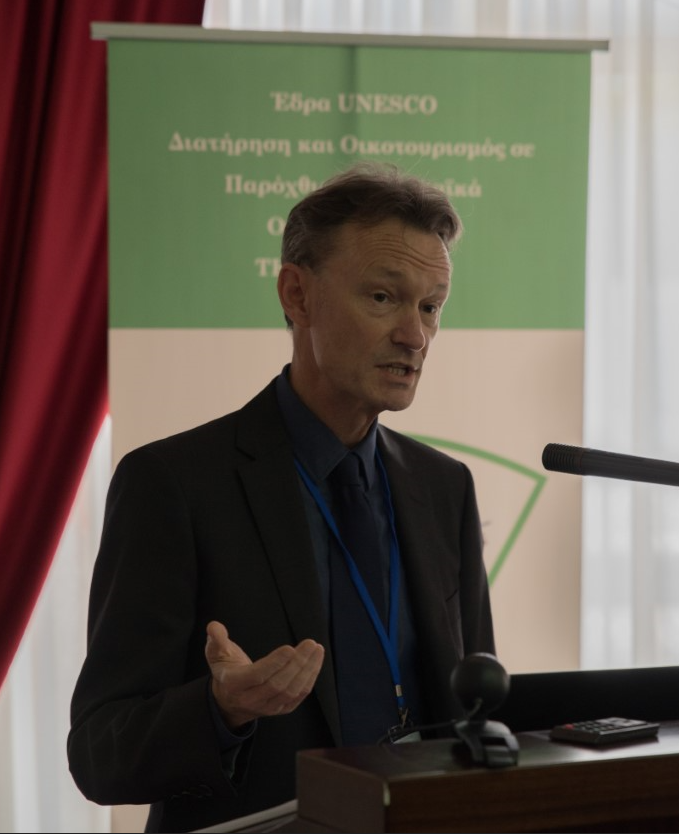You can search for courses, events, people, and anything else.
“Engineers tend to make things and send them out without collaborating with the communities who use them. I decided this needed to change,” says Spyros Schismenos, a humanitarian engineer from Western Sydney University. Guided by members of rural riverside communities in Greece and Nepal, Schismenos and an international team of researchers are developing a renewable-energy-based, flood-warning system that could provide power and protection to remote and vulnerable populations.
The increasing intensity of storms is a worrying prospect for the 1.47 billion people already living at risk of severe flooding, who often have the fewest resources. “In rural communities worldwide, around a billion people have no access to electricity,” says Garry Stevens, a member of the team and a clinical psychologist from Western’s School of Social Sciences. “And of those in flood-risk areas, very few have an evacuation plan.” This is particularly problematic in areas with a large number of elderly and frail people, who need more time to get to safety. An early warning system is essential.
“Flash floods come fast, and the traditional warning systems — a stake in the river or water lines painted on a rock — may not alert an entire community in time,” says Stevens. “Plus, they only work during the day. Half a village could be lost while people are asleep, so you need a really loud warning system.”
Hydropower for Disaster Resilience Applications, or ‘HYDRA’, is one of a rising number of humanitarian engineering projects that prioritise local knowledge and opinions in the design of sustainable solutions. Humanitarian engineering involves working with local communities to build disaster resilience within a sustainable development framework. “It gives people the capacity to protect their progress and assets,” says Stevens.
As Dimitrios Emmanouloudis, Schismenos’ co-author and director of the UNESCO Chair on Conservation and Ecotourism of Riparian and Deltaic Ecosystems, points out, flood warning systems across Europe and beyond tend to focus on large areas. “While these predict extreme weather events most times, they cannot detect small scale events like flash floods,” he says. “This project has brought the focus to a local level, making the research more precise and reliable, and international organisations such as UNESCO are keen to see this kind of work continue.”
HYDRA Power
The idea for HYDRA occurred to Schismenos during his master’s degree in disaster management at the International Hellenic University in Greece, when he observed both hydropower and early warning systems in action, but were never used together. He also noted that renewable energy is rarely used in disaster management, and a combined system seemed like an obvious solution. However, he was wary of foisting something on a community without first finding out what people want and need.
When Schismenos joined Western as a PhD student and began working with Stevens, who was already leading research on sustainable development in water resources and disaster management, HYDRA was transformed from a kernel of an idea to an exciting international collaborative research initiative.
Working with their colleagues overseas, Schismenos and his team selected two remote communities that fitted the vulnerability criteria. Aggitis, a small village in northern Greece has fewer than 100 residents, many of them elderly, and relies on farming and ecotourism for income. Floods are frequent, especially in spring due to snow melt from nearby mountains. A few renewable energy systems are in place, including a small hydropower station and solar panels on some homes. By contrast, Dhuskun, in central Nepal, has more than 3,000 residents and a much lower income from its farming activities and trade. The town has a small hydropower station that is often put out of action by landslides or floods, which are common during spring and the monsoon season.
The team selected local participants with diverse perspectives, from residents and business owners, to emergency workers and academics. Participants, through two rounds of individual, open interviews conducted in their local languages, confirmed that flood risk and energy supply were a priority. “We then created an evidence-based catalogue of solutions,” says Schismenos, “and asked which people preferred.” Options included solar panels, hydropower, standalone flood warning systems (sirens and SMS), or combinations of the two. The combined hydropower flood siren system was a clear favourite, getting 15 of the 16 votes.
An Integrated System
“Under normal conditions, hydropower generates energy for the community, but when a flood is coming, sensors detect a change in the water flow, and the system becomes an alarm,” explains Schismenos. It would also be rigged up to lights along the evacuation routes and in shelters. The energy is stored in batteries, so if the hydropower unit fails during the floods, there should be 12 hours of power backed up. “The system is all automated, low-tech, low-cost, and DIY,” says Schismenos. “We work with the community so they know how to build and maintain it.”
“One major challenge is debris,” says Stevens. “The system must be set up so that it is protected, and if it does fail, the batteries must have enough power backed up to assist the evacuation and keep people safe.” In Dhuksun, participants suggested the hydropower unit should be designed to float above the flowing tide of debris.
Through discussions with locals, conducted remotely due to COVID-19, the team gained insights (later published in the journal Geosciences) that could help shape disaster planning. All participants highlighted the importance of community cohesion, and that people would always help vulnerable friends, family or neighbours to evacuate. While older respondents still preferred siren systems, everyone agreed that mobile phones were essential in an emergency.
“People won’t have to wait for a text alert from the national warning system, which could arrive too late”
Many locals were worried that the system would be too expensive, but the team are confident they will have funding. “Local governments are interested in supporting this, as it will provide power and save money,” says Schismenos. “It will also attract tourists who want to see sustainable development in action.” And the benefits of HYDRA are not limited to low-income countries. “Supplementary energy systems have appeal in high-income countries, as hydropower can top up and protect their power supply,” adds Stevens.
The project has attracted a lot of international interest, including from Guatemala, Taiwan, Brazil, and particularly from regions in protected areas. In Thailand, for example, floods regularly devastate rural areas and big cities alike. Wasi Phul, a civil engineer working for the Thai government, thinks that HYDRA could help by bringing disaster management down to a local level. “People won’t have to wait for a text alert from the national warning system, which could arrive too late,” he says.
In the lab at Western, which funded the work between 2019 and 2022, the team are in the middle of R&D and have been testing their hydropower system to find the best turbines and to measure response to turbulence. They are now working out how to shield it from debris, which could present obstacles, but they hope to be running site tests using their prototype in Agattis in 2023. Once the system is working well in the field, the team will take it to Nepal.
The cross-disciplinary project addresses the UN Sustainable Development Goals, including those on Affordable and Clean Energy (7), Industry, Innovation and Infrastructure (9), and Sustainable Cities and Communities (11), as well as the Sendai Framework on Disaster Risk Reduction. “The challenge is how to address all of these goals in an efficient way at a small and local level,” says Schismenos, “which is why we must keep engaging with communities.”
Meet the Academic | Spyros Schismenos
Spyros Schismenos is currently a cross-disciplinary researcher at the School of Social Sciences and the School of Engineering, Design and Built Environment at Western Sydney University. He is a member of the Humanitarian and Development Research Initiative (HADRI) at Western, an IRDR Young Scientist, a member of the Youth International Soil Governance Commission (UN FAO), and the APAC focal point for the UNESCO Chair for the Conservation and Ecotourism of Riparian and Deltaic Ecosystems. Spyros collaborates with the UNESCO Archaeological Site of Philippi in Greece, the UNESCO MAB Maya Biosphere Reserve in Guatemala, and the Municipality of Nova Friburgo in Brazil.
Before joining Western, Spyros worked as a research assistant at the Research Center for Soil and Water Resources and Natural Disaster Prevention, National Yunlin University of Science and Technology in Taiwan. His PhD research (conducted at Western) focused on humanitarian engineering solutions for flood-prone communities in Greece and Nepal. During his PhD Spyros received two awards for research excellence and innovation.
Spyros’s research focuses on humanitarian engineering, natural and human-induced disaster management, emergency technology, prototype development, renewable energy, water and soil resources, community engagement, sustainable development, social/environmental justice, climate change and aged care. He has a substantial publication record (incl. articles in Q1/Q2 journals and chapters in UN-related reports). His work is featured on PreventionWeb - UNDRR and PubMed.gov
Meet the Academic | Dr Garry Stevens
Dr Garry Stevens is a Clinical Psychologist by professional background and the Program Director in Humanitarian and Development Studies at Western Sydney University. As part of the Humanitarian and Development Research Initiative (HADRI), he is involved in projects examining population preparedness for disasters and critical incidents, including occupational risk and resilience factors among emergency service workers, Disaster Medical Assistance Teams (AUSMAT) and humanitarian aid workers and trainees. This interdisciplinary work draws on the common themes of disaster mental health and health protective behaviours, and he has published over 70 peer reviewed journal articles and book chapters examining a range of community and first responder populations.
Garry is also involved in technology assisted mental health care in hospital and community settings, including management of the Western Sydney multi-site “SMS SOS” trial which is examining supportive text message aftercare for discharged hospital patients who have experienced self-harm. This is the largest clinical trial of its kind internationally and Garry has secured over $430,000 in competitive grants in the last five years to conduct this ground-breaking research within the Western Sydney Local Health District.
Credit
Future-Makers is published for Western Sydney University by Nature Research Custom Media, part of Springer Nature.
© Wakil Kohsar/Contributor/AFP/Getty
© Lode Lagrainge/Unsplash
© Dan Meyers/Unsplash

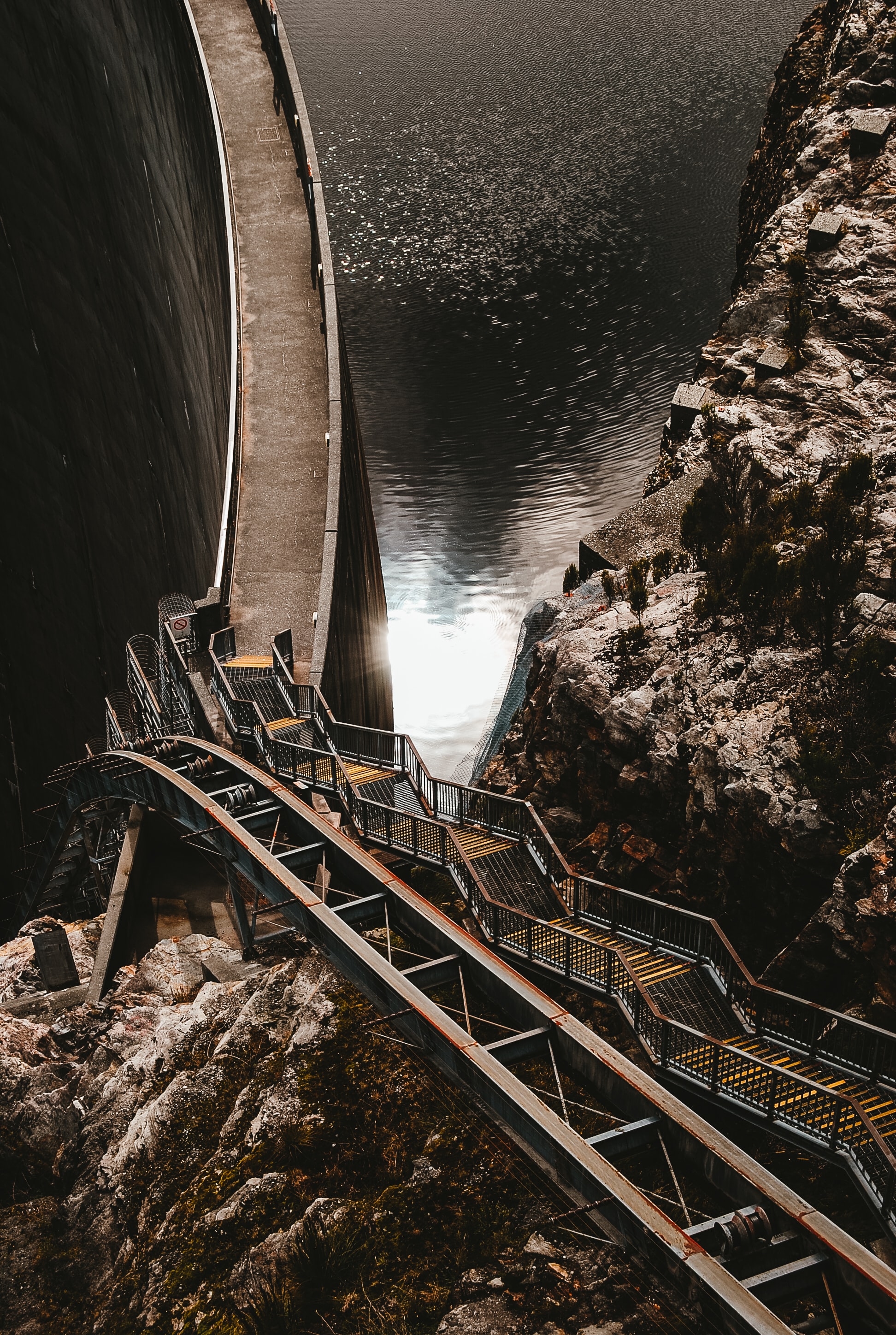
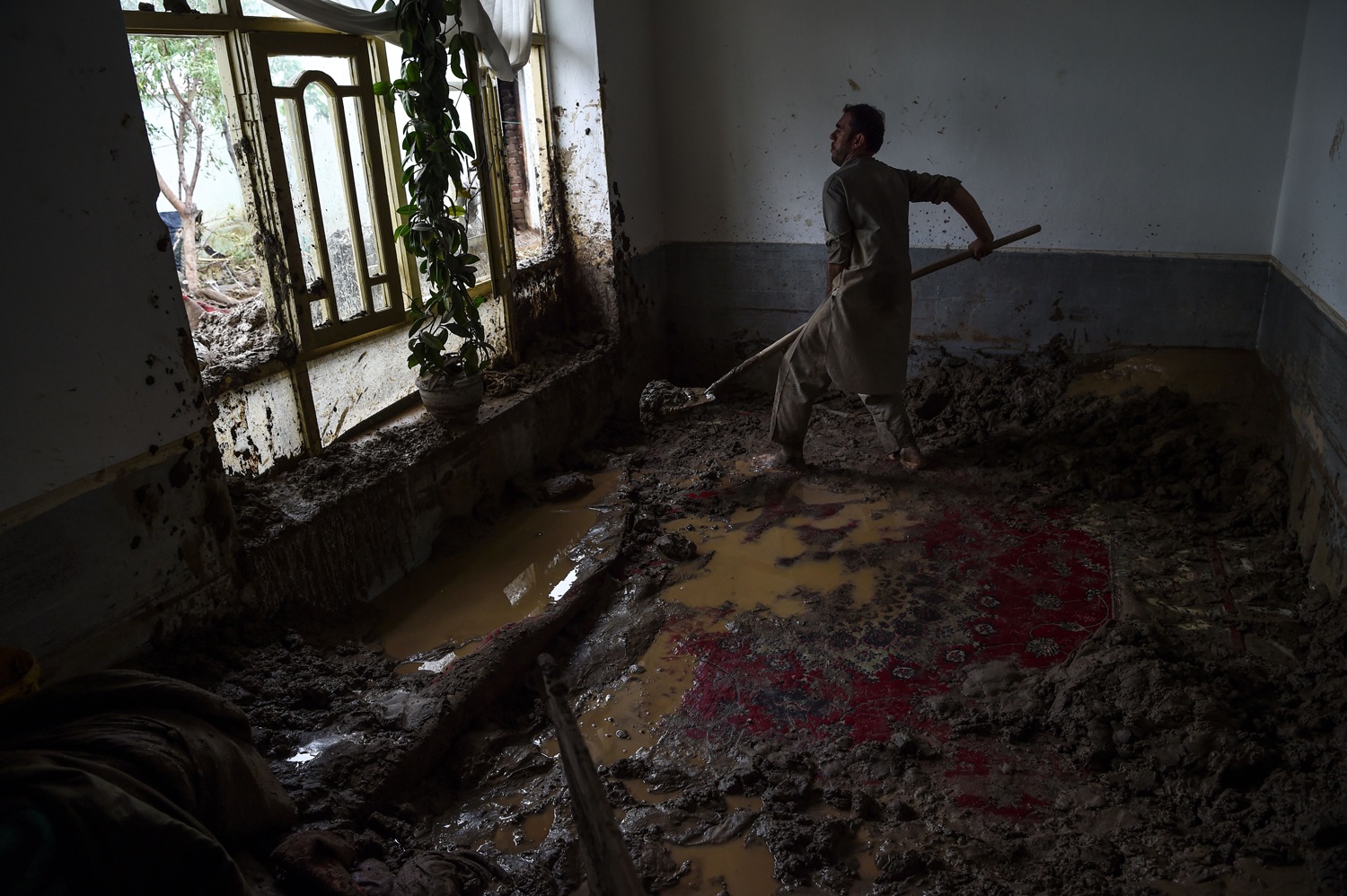
%20(1).jpg)
